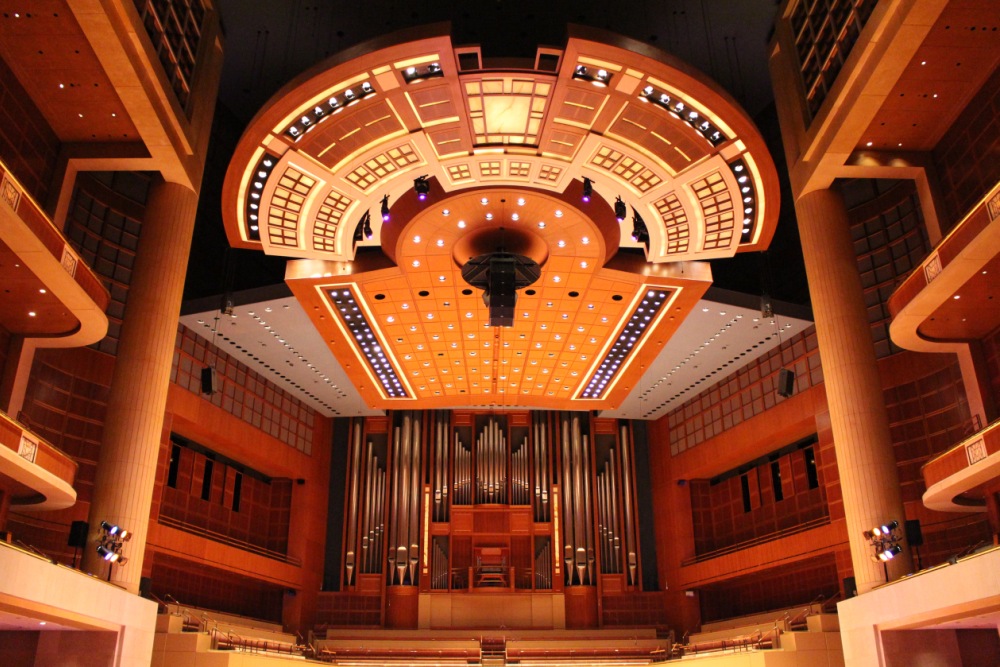
Gert-Jan Kramer believes in building bridges.
Driven by a conviction that the connection between a good conductor and good musicians is best showcased by utilizing quality instruments, Kramer (a Dutch businessman and DSO board member) has put his money where his heart is by purchasing a 1692 "Falmouth" Stradivarius and a 1715 Giuseppe Guarneri (two extremely valuable violins regarded as being among the finest ever made) which are now on loan to the Dallas Symphony Orchestra.
If you provide a quality instrument, Kramer feels, you get a better result.
And an impacting result is certainly being achieved during this weekend’s classical concert season finale conducted by DSO Music Director Jaap van Zweden which opened on Thursday evening. In Mozart’s Concerto No. 3 in G major for Violin and Orchestra, Co-Concertmaster Nathan Olson performed extraordinarily on the Guarneri violin (accompanied by selected woodwind musicians, two dozen additional violinists, etc.) evoking a state of peaceful re-centering as well as offering upbeat waltz-like tunes which seem to urge listeners to take a skip about the room. Olson also skillfully performed a very technically challenging solo number, even playing double melodies simultaneously.To quote a nearby patron, “that’s ridiculously difficult.”
Like Kramer, 20th-century composer Carl Orff believed in building bridges as well between various artistic expressions as demonstrated by his wonderfully elaborate crowning achievement, Carmina Burana, which opens and closes with the very familiar and highly dramatic "O Fortuna," a thrilling and popular theatrical work which has been used in hundreds of film scores (hear it here).Setting to music a collection of 24 medieval poems from a manuscript originally discovered in a Benedictine monastery (written principally in Latin with some German and a little French), Carmina Burana is a powerful, irreverent, humorous, and at times erotic examination of seduction, wealth, morality, nature, fleshly pleasures, and more through depictions like pleasant forests, a surrender to passion, intense internal conflict, a life of a gambling, and drinking in a bawdy tavern.
For this production of the piece (approximately one hour in length), the Dallas Symphony Orchestra was supplemented by a vocal ensemble comprised of internationally-acclaimed tenor John Osborn, noted rising baritone Liam Bonner, and soprano Sarah Joy Miller (a finalist in the New York Metropolitan Opera Council Auditions) along with the 160-member Dallas Symphony Chorus (directed by Joshua Habermann) and the Children’s Chorus of Greater Dallas (directed by Cynthia Nott).The large orchestra, enhanced by an expanded percussion section and two grand pianos and an upright piano onstage, gave a fascinating performance which included the monk-like chants of "Veris leta facies" (The merry face of spring), the exciting "Estuans interius" (Burning Inside) with its galloping themes and ka-pow ending; and the elegant "Amor volat undique" (Cupid flies everywhere) which warmed the atmosphere like a soundtrack to sunrise.
The musical styles of this modern work (which premiered in 1937) are very interesting and extremely varied from one movement to the next, making it ideal for first-time or infrequent concertgoers who may be less familiar with the classical music of the symphony.Attendees will want to arrive early for this show in order to read through the extensive offering of program notes which conveniently include lyric translations in English.
Carmina Burana runs through this Saturday, March 25, 2013; so get tickets now and head on over to the Meyerson Symphony Center where you can enjoy what may be the most impressive song you’ve ever heard about an ill-fated swan being roasted over a fire!
MORE ON THE FLASH LIST
































